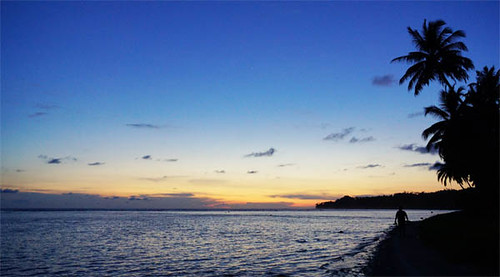
Stone Jumping at Bawomataluo Site
Traveljunkieindonesia.com – I have to be honest and say that when NGIndonesia & Sony Indonesia approached me and asked me to join their photo trip to Nias Island, I didn’t know very much about professional photographic, I’m not travel photographer. But, thank you. At now, I write “a travel photographer” in my bio. Saohagolo banget!
For a place known to outside world, Nias is surprisingly underdeveloped and the earthquake undid any minor steps forward. Don’t expect rapid transport across the island, internet connection or reliable mobile phone coverage. Ya’ahowu!
So, Here are 5 Reasons to Visit Nias Island:
1. History Niassans
Local legend tells it that Niassans are the descendants of six gods who came to earth and settled in the central highlands. Anthropologists link them to just about everyone: the Batak of Sumatera, the Naga of Assam in India, the aborigines of Taiwan, and various Dayak groups in Kalimantan.
Nias history is the stuff of campfire tales in which an exotic people practised head hunting and human sacrifice long after the rest of the world started fainting at the sight of blood. Traditionally, Niassans villages were presided over by a village chief, heading a council of elders. The island didn’t come under full Dutch control until 1914.
The indigenous religion was thought to have been a combination of animism and ancestor worship, with some Hindu influences. Today the dominant religions on Nias are Christianity and Islam – overlaid with traditional beliefs.
2. Sorake Beach & Lagundri Bay
a fish-hook piece of land creates the perfect horseshoe by of Lagundri and the surf break at Sorake, which is said to be the best right-hander in the world. The main surfing season is June to October, and in July and August waves can be more than 4m high. Folks refer to this area interchangeably as Sorake or Lagundri. If you’ve never surfed before, you’re better off learning in a place that is easier to get to and on a break with sandy beach. Popular surfing destinations off Nias include the islands of Asu, Bawa, and Hinako. The wave is superb and has deservedly kept this far-flung island on the international surfing circuit.
3. Bawömataluo Site
Bawömataluo is 15km from Teluk Dalam. This is the most famous and the most accessible, of the southern village. Bawömataluo (Sun Hill) is perched on a hill about 400m above sea level. The final approach is up 88 steep stone steps. House are arrenged along two main stone-paved avenues that meet opposite the impressive chief’s house, thought to be the oldest and largest on Nias. Outside are stone tables where dead bodies were once left to decay.
Although Bawömataluo is still worth exploring, tourism is in full swing here, with lots of eager knick-knack sellers. There are also culture display of war dance (Baluse), traditionally performed by young, single males, and stone jumping. The latter was once a form of war training; the jumpers had to leap over a 1.8m-high stone wall traditionally topped with pointed sticks. These days the sticks are left off – and the motivation is financial.
4. Gomo & Tetegewo
The Village around Gomo, in the central highlands, contain some of the island’s best examples of stone carvings and menhirs (single standing stones), some thought can be found in the village of Tundrumbaho, 5km from Gomo, Lahusa Idanotae, halfway between Gomo and Tundrumbaho, and at Tetegewo (beautiful hill), 7km south of Gomo.
unfortunately, Gomo is virtually inaccessible. Getting to Tundrumbaho involves a tough two-hour uphill slog through the steamy jungle. From Lagundri, getting to Tetegewo is possible, but it’s a long trip – it’s probably only worthwhile if you’re interested in this type of architecture. the ancient megalithic monuments is incredible for cultural tourists.
5. Museum Pusaka Nias
Jl. Yos Sudarso 134A, Gunung Sitoli. Museum Pusaka Nias has a good collection of woodcarvings, stone sculptures and ceremonial object. The garden has an interesting display of local plants and herbs and some models of traditional Niassan architecture.
Happy Green Travels!
Follow us on Twitter @TravelJunkieID & like us on Facebook.
This is a Sponsored Post.







